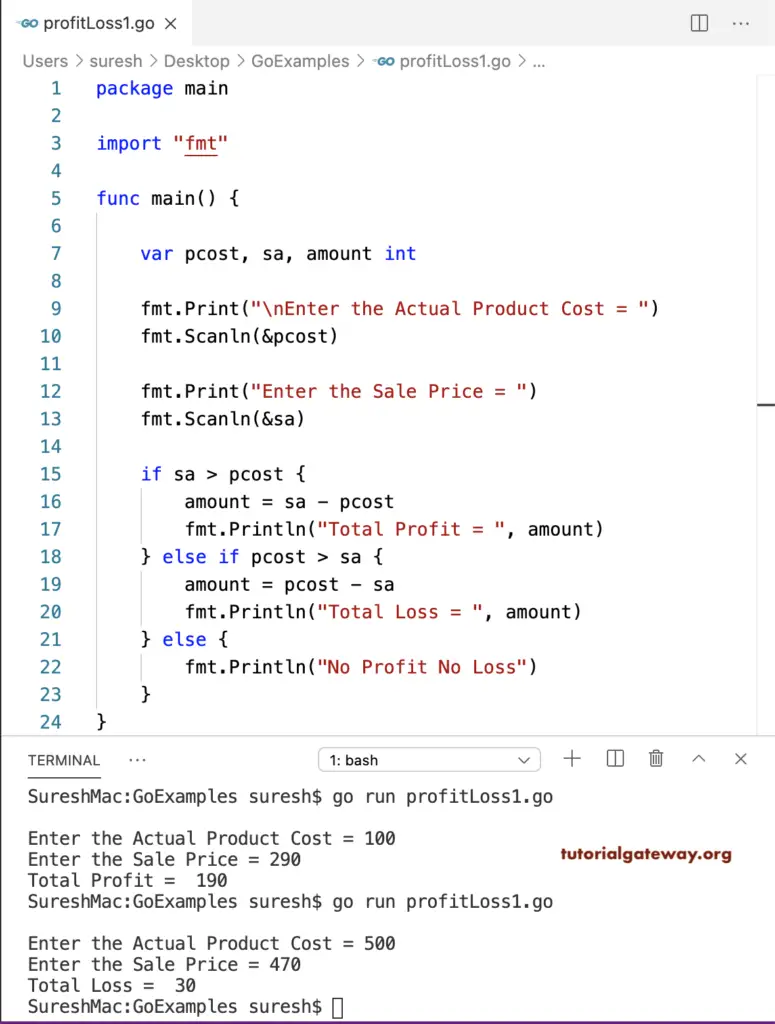This go program uses the actual product cost and the sales amount to calculate profit or loss. It uses an else if statement to print output.
- If the product cost is greater than the sales price, then loss.
- If the sales price is higher than the product cost, then the product is profit—otherwise, no profit or loss.
package main
import "fmt"
func main() {
var pcost, sa, amount int
fmt.Print("\nEnter the Actual Product Cost = ")
fmt.Scanln(&pcost)
fmt.Print("\nEnter the Sale Price = ")
fmt.Scanln(&sa)
if sa > pcost {
amount = sa - pcost
fmt.Println("Total Profit = ", amount)
} else if pcost > sa {
amount = pcost - sa
fmt.Println("Total Loss = ", amount)
} else {
fmt.Println("No Profit No Loss")
}
}

Golang Program to Calculate Profit or Loss
In this go program, we used an arithmetic operator to find the profit or loss.
package main
import "fmt"
func main() {
var pcost, sa, amount int
fmt.Print("Enter the Actual Product Cost = ")
fmt.Scanln(&pcost)
fmt.Print("Enter the Sale Price = ")
fmt.Scanln(&sa)
if sa-pcost > 0 {
amount = sa - pcost
fmt.Println("Total Profit = ", amount)
} else if pcost-sa > 0 {
amount = pcost - sa
fmt.Println("Total Loss = ", amount)
} else {
fmt.Println("No Profit No Loss")
}
}
SureshMac:GoExamples suresh$ go run profitLoss2.go
Enter the Actual Product Cost = 1900
Enter the Sale Price = 2500
Total Profit = 600
SureshMac:GoExamples suresh$ go run profitLoss2.go
Enter the Actual Product Cost = 2000
Enter the Sale Price = 1340
Total Loss = 660
SureshMac:GoExamples suresh$ go run profitLoss2.go
Enter the Actual Product Cost = 100
Enter the Sale Price = 100
No Profit No Loss